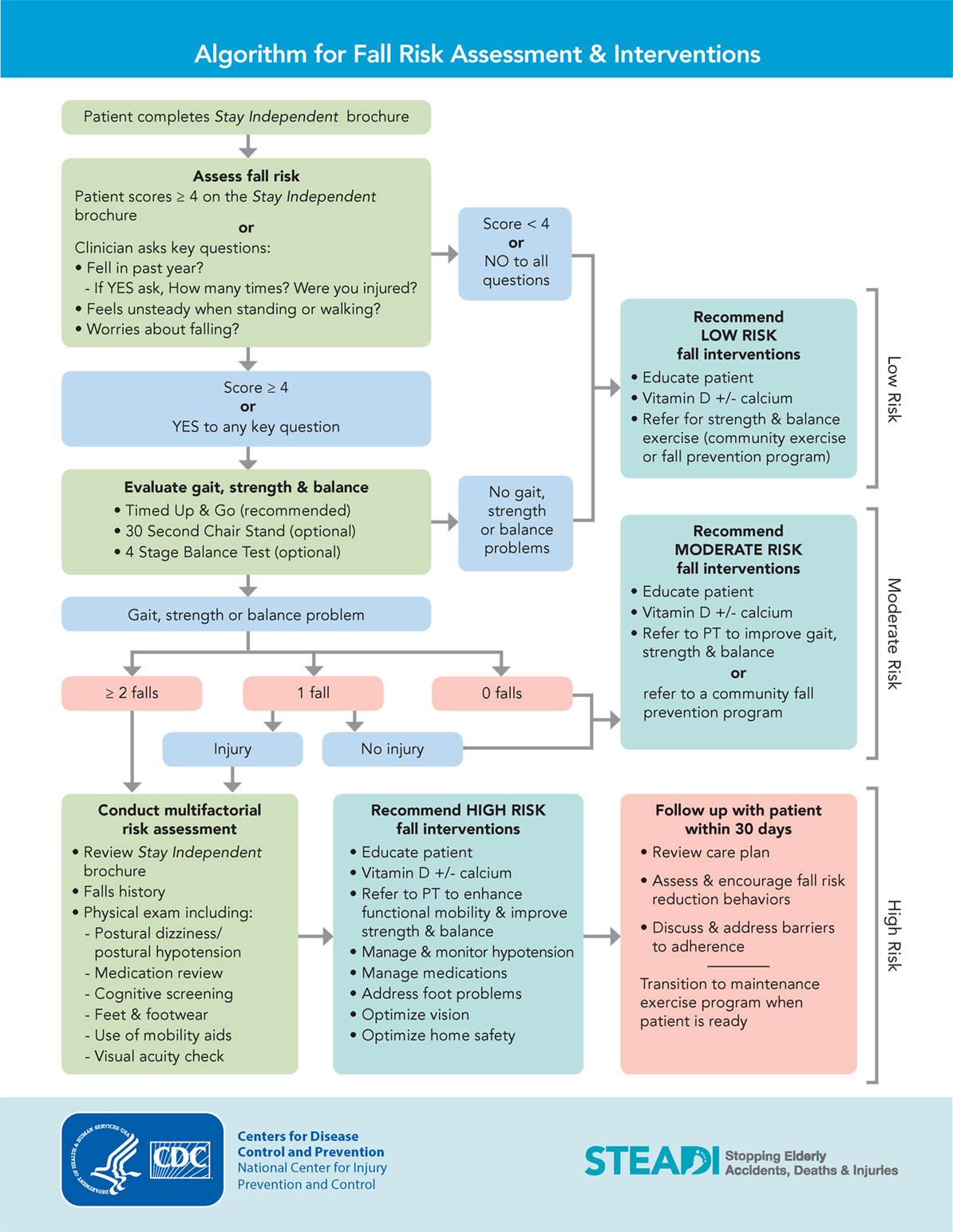How Dementia Fall Risk can Save You Time, Stress, and Money.
Table of ContentsSome Ideas on Dementia Fall Risk You Should KnowNot known Incorrect Statements About Dementia Fall Risk 8 Simple Techniques For Dementia Fall RiskGetting The Dementia Fall Risk To Work
A loss threat analysis checks to see how most likely it is that you will certainly drop. The analysis normally includes: This includes a collection of inquiries regarding your overall health and wellness and if you have actually had previous drops or troubles with equilibrium, standing, and/or strolling.Treatments are recommendations that may lower your risk of falling. STEADI includes three actions: you for your danger of falling for your threat elements that can be improved to attempt to stop falls (for example, balance troubles, damaged vision) to decrease your danger of falling by using reliable techniques (for example, providing education and learning and sources), you may be asked several concerns including: Have you dropped in the past year? Are you fretted about falling?
After that you'll sit down once again. Your provider will examine how long it takes you to do this. If it takes you 12 seconds or more, it may mean you are at greater risk for a fall. This test checks stamina and balance. You'll rest in a chair with your arms crossed over your breast.
Move one foot midway onward, so the instep is touching the large toe of your other foot. Relocate one foot completely in front of the various other, so the toes are touching the heel of your various other foot.
The 5-Second Trick For Dementia Fall Risk
Many falls occur as an outcome of numerous adding variables; as a result, handling the danger of falling starts with recognizing the variables that contribute to fall danger - Dementia Fall Risk. Some of the most appropriate risk variables consist of: History of prior fallsChronic medical conditionsAcute illnessImpaired stride and equilibrium, lower extremity weaknessCognitive impairmentChanges in visionCertain high-risk drugs and polypharmacyEnvironmental elements can also boost the threat for falls, consisting of: Insufficient lightingUneven or damaged flooringWet or slippery floorsMissing or damaged hand rails and order barsDamaged or poorly equipped equipment, such as beds, mobility devices, or walkersImproper usage of assistive devicesInadequate guidance of individuals residing in the NF, consisting of those who display aggressive behaviorsA effective autumn danger monitoring program calls for a complete professional assessment, with input from all participants of the interdisciplinary group

The care strategy should likewise include treatments that are system-based, such as those that advertise a secure atmosphere (appropriate lights, hand rails, order bars, and so on). The effectiveness of the treatments must be evaluated occasionally, and the treatment strategy revised as necessary to mirror adjustments in the loss danger assessment. Implementing a loss threat administration system using evidence-based finest technique can reduce the occurrence of falls in the NF, while restricting the capacity for fall-related injuries.
Facts About Dementia Fall Risk Uncovered
The AGS/BGS standard recommends screening all grownups aged 65 years and older for fall danger each year. This testing contains asking individuals whether they have actually dropped 2 or even more times in the previous year or sought medical attention for a fall, or, if they have not fallen, whether they really feel unsteady when strolling.
Individuals who have dropped once without injury needs to have their balance and stride assessed; those with stride or balance irregularities ought to receive added evaluation. A background of 1 fall without injury and click for more without gait or equilibrium issues does not call for additional assessment past continued yearly loss risk testing. Dementia Fall Risk. An autumn risk evaluation is required as part of the Welcome to Medicare exam

Everything about Dementia Fall Risk
Recording a drops history is one of the top quality signs for autumn avoidance and management. copyright medications in certain are independent forecasters of drops.
Postural hypotension can commonly be alleviated by decreasing the dosage of blood pressurelowering drugs and/or quiting medications that have orthostatic hypotension as an adverse effects. Use above-the-knee support hose and resting with the head of the bed raised may also minimize postural reductions in high blood pressure. The recommended elements of a fall-focused checkup are received Box 1.

A Yank time greater than or equal to 12 seconds recommends high autumn danger. Being unable to stand up from a chair of knee height without making use of one's arms indicates boosted fall threat.